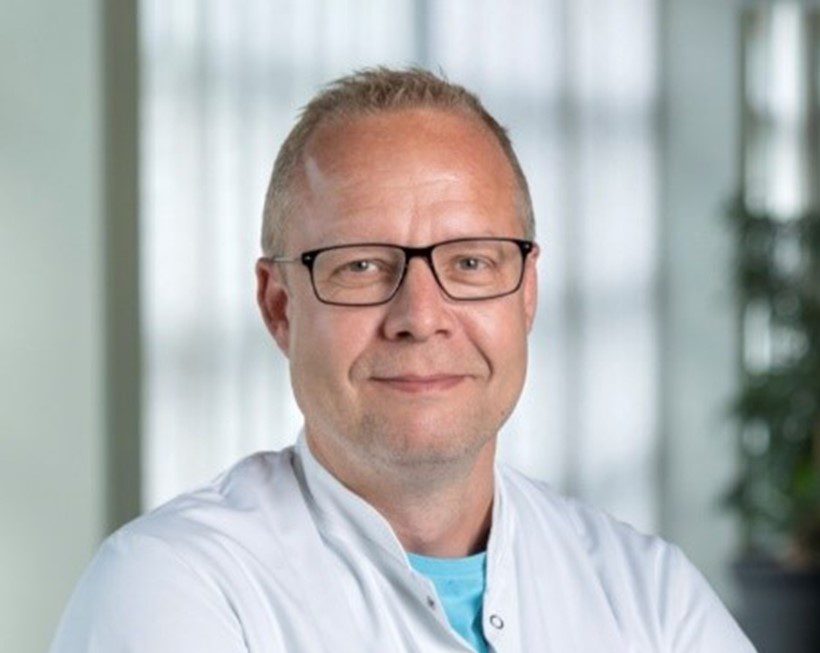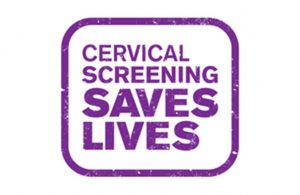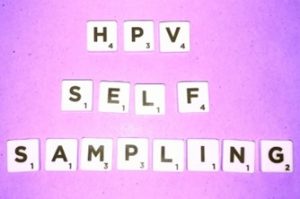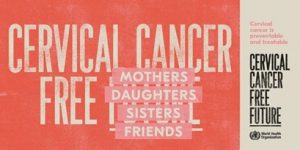
This post was written by Jesper Bonde, a molecular biologist specializing in human infectious virus, cancer and cancer prevention. He was educated in Denmark and the US. Today, Dr. Bonde heads the molecular pathology laboratory at AHH-Hvidovre Hospital, Copenhagen University Hospital. The department operates the cervical screening program in the Capital Region of Denmark, covering one third of Denmark’s population, as well as cervical cancer screening in the North Atlantic countries of Greenland and the Faroe Islands. The laboratory is leading the implementation of primary HPV screening in Denmark. The department was recognized in 2021 as amongst the 10 Best Public Innovations for HPV Self-Sampling, and awarded Best Cervical Screening Unit in Denmark four years in a row (2018-2021).
Dr. Bonde is the PI of studies on screening technology, HPV self-sampling, methylation and biomarkers, and is the appointed HPV expert to the National Cervical Screening Steering Committee. Dr. Bonde is engaged as an advisor on health care policy, HPV and cancer prevention for a number of countries, organizations and institutions.
Note: This blog article is the opinion of the author and does not reflect Danish or the Capital Region of Denmark’s healthcare policy.
HPV self-sampling: Let´s step up on cervical cancer prevention
Cervical screening is the cervical cancer prevention option for the vast majority of adult women not vaccinated. And cervical screening to date has been an overwhelming success.
Over a span of 50 years, cervical screening has evolved, advanced, and expanded. As a result, cervical cancer incidence has reduced, from being one of the most common female cancers to not even making it into top 10 most frequent cancers today (UK Cancer Statistics, 2022).

Credit: Public Health England
The success of cervical cancer screening stands firm on pillars of continued evolution of medical diagnostic technologies, committed research, societal awareness, and dedicated healthcare professionals. Because of this, and more, screening has gained acceptance, with women actively choosing to participate in screening programmes.
But participation is becoming a pain point.
Screening only protects those who participate
Over the past decade, participation in cervical screening has dropped across a range of western countries with organized cervical screening programmes in place. Not dramatically, but a steady, slow decline.
Why do women choose to ignore the call for cervical screening? Reasons are many and include, in no particular order: health system pressures, difficulty taking time off from work for a non-acute medical appointment, and the discomfort of the gynaecological examination. (Discomfort has been reported by many women when asked).
However, regardless of reasons for non-participation, the fact remains that if adult, unvaccinated women abandon cervical screening, cervical cancer will return with a vengeance and return to becoming an even greater public health challenge. Today, 50% of all cervical cancers are detected amongst the 30% of women who do not get screened at regular intervals, or at all. The dominant risk factor for cervical cancer in women who carry a human papillomavirus (HPV) infection is non-participation in screening. Hence, until such a day that the majority of women have received the HPV vaccine at school age, it is only by putting in an effort to uphold high participation in cervical screening that cervical cancer can be beaten.
Fortunately, many of the reasons for non-participation can be remedied by employing new technologies, such as inclusion of a self-sampling option in cervical cancer screening programmes. HPV self-sampling uses a simple brush, or a swab (not unlike a COVID swab which we all know so well by now!). This allows women to collect a screening sample in the privacy of their home, at a time that suits them. Once collected, the sample can be posted to the laboratory for analysis and, before you know it, the result is in your inbox. Easy, simple, convenient.

Credit: Public Health England
HPV self-sampling as a new option in screening
In the Capital Region of Denmark, HPV self-sampling was piloted between 2014 and 2016 as a supplementary screening offer to women not attending screening at regular intervals. The region became an early adopter of HPV self-sampling when, in 2017, HPV self-sampling became a routine healthcare service offer for screening non-responders. More than 200,000 un-screened women have since received this invitation for HPV self-sampling.

What is a self-sample? Well, in our setting the self-sampling kit contains a simple brush for vaginal sampling, a user manual, a pre-paid postage return envelope (compliant with the mail service requirement for shipping biological samples), and a pamphlet with FAQs and information on HPV and cervical cancer. While it may sound simple, a great deal of of effort, innovation and research has gone into ensuring the self-sampling kit is inconspicuous in appearance and feels safe. The actual sampling method itself is rather simple. Firstly the brush is inserted, the handle then twisted 5 times, the brush retrieved, put into the return envelope, and sent off to the lab using regular mail.
The power of a self-sample is that it is analyzed for HPV by molecular methods. International evidence shows that if self-samples are analyzed in a professional, quality-controlled and quality-assured manner, their safety is on par with clinician-collected screening samples.
So how have women responded to HPV self-sampling? Well, most women are very enthusiastic about the fact that they now have a choice. Choice means empowerment. And empowerment creates participation.
Amongst screening non-attenders (in the Capital Region of Denmark) 30% have accepted the HPV self-sampling invitation. Eligible women are able to accept through our Self-Sampling online portal. As the health service provider, we are able to easily manage the registrations within the system, with the highest degree of security around patient-identifiable information, and with a clear chain of custody of the self-sampling kits mailed out and returned.
Another very positive observation is that 40% of those women who opt-in for self-sampling have been unscreened for 10 years or more. Such a long period of being unscreened is a significant risk factor for cervical cancer. Recruiting these lapsed attenders holds the potential to really make a dent in the cervical cancer incidence rate.
However, not all women who opt-in for self-sampling return their screening sample. Only two out of three invited women return the self-sampling kit for analysis. This observation remained confusing to us for a while. Why opt-in and not use the test kit? Register-based research later showed that, in addition to the women returning their self-sampling kits for analysis, a further 11% of the women invited and opting to take a self-sample actually attended for a clinician-collected screening sample instead. My personal opinion is that by offering a choice, women can actively consider their options. Again, choice means empowerment. And empowerment creates participation.

Credit: Getty Images
HPV self-sampling instead of clinician-collected screening samples?
There is no doubt that HPV self-sampling can and should be an option for cervical screening. The benefits are too plentiful to ignore. In addition to the autonomy it brings for women, self-sampling offers equity and a means to address clinician-patient working pressures in primary healthcare. Imagine if, say, a third of all women screened by clinician-collected samples instead took a sample by themselves. The number of clinical consultations freed up for other purposes would be substantial. If this can achieved without compromising screening quality, everyone stands to benefit: women, overworked healthcare professionals, the health system, and society itself. On the other hand, do we want self-sampling to fully replace clinician-collected samples? At present, I personally think not. It is about choice and providing options.
In the absence of overwhelming evidence of one screening method being significantly better than the other, would a shift to a new ‘one size fits all’ model of screening prove advantageous? What are the benefits of advocating for a shift from one ‘one size fits all’ model (clinician-collected samples), to be replaced by another (self-sampling)? A group of UK and Danish researchers, led by Dr. Rebolj of King´s College London, recently detailed a list of key areas for further investigation. The list is comprehensive, and research into each of these topics will no doubt provide a strengthened evidence base to further qualify the use of self-sampling in cervical cancer prevention. It’s worth a read, for both inspiration and keeping up to date.
You can also listen to the author’s recording here.
Yet, while we work on perfecting technology and increasing our understanding of the mechanisms that drive participation with HPV self-sampling for cervical screening, we should start introducing HPV self-sampling into cervical screening programmes globally. Following in the footsteps of Sweden, the Netherlands, Norway, Denmark, Australia, Indonesia, South Africa, Brazil, and other countries where HPV self-sampling has either been implemented or piloted, all the necessary foundations have been laid to include self-sampling as a safe, efficient and effective form of screening participation. But research and policy can often make haste too slowly. At the end of the day, cervical cancer prevention will deteriorate if the decline in cervical screening participation is not properly addressed, and if respective services are not adapted to match the 21st century. As discussed, choice is an important motivator for women to actively engage in their own health.
As a closing remark, I would thank King’s College London for inviting me to write here. I believe our joint goal and purpose in health research is to create progress through innovation, to provide women with options, and to eliminate cervical cancer. Similarly, our joint aim is to ensure that clinician-collected and self-collected cervical screening samples maintain the highest possible standards, and quality, of clinical diagnostics. In doing this, we continue to provide innovation, evidence and solutions necessary to further build on 50 years of excellent progress towards eliminating cervical cancer.

Credit: PAHO, WHO
Researcher profile
Name: Jesper Bonde
Nationality: Danish
Education: PhD in Molecular Biology, specializing in virology and cancer. 18-year career working on HPV and cancer prevention.
Position: Senior Researcher, Department of Pathology, AHH-Hvidovre Hospital, Copenhagen University Hospital
When/where do you get your best research ideas?
Research ideas come to me in many situations. But, for me, the most stimulating environment is sitting around discussing, arguing science with colleagues. After hours, at conferences and meetings: that’s when the discussions evolve. That’s when you can immerse yourself in topics, challenge ideas and develop new ones. We rarely have time for this in a busy day at the hospital.
Which failure(s) changed you the most?
As I’ve grown older, I have realized that failure is a big word. Things I thought to be a failure earlier in my life tend to grow smaller, even insignificant, in importance with time.
What is the best piece of advice (work or life) you’ve been given?
For my first ever scientific presentation, an older professor peeked over my shoulder in the speaker “ready room.” He then said, “You ready there, boy? If not, the audience will eat you alive.” It scared the living daylights out of me! I have since tried to keep the advice of always respecting the scientific audience when presenting research. The older professor was James Watson. Not that I noticed at the time.
I’m inspired most by…
Humanity – amazing!
What’s an event that changed your life?
When I decided to study Biology rather than enter the shipping business of the EAC – the Danish East Asia Company. A hard call at the time. Would have been a lot wealthier today had I chosen shipping ?
What’s the next big thing in cancer? Which will be the game changers?
Integration of massive information flows from numerous sources, supported by AI algorithms to guide clinicians towards precise and timely interventions based upon risk assessment. In theory, most disease can be predicted and, again in theory, prevented.
What is your favourite paper that you’ve published in the last 5 years (the one you’re most proud of)?
Hmm. I think the systematic review we published a few years ago on the clinical use of HPV genotyping in cervical cancer screening. The principles of differential risk of cancer by HPV genotypes are now being implemented in Danish primary HPV screening. That’s not too shabby for an outcome. But, as always, we stand on the shoulders of those before us.
.
The views expressed are those of the author. Posting of the blog does not signify that the Cancer Prevention Group endorse those views or opinions.

Leave a Reply